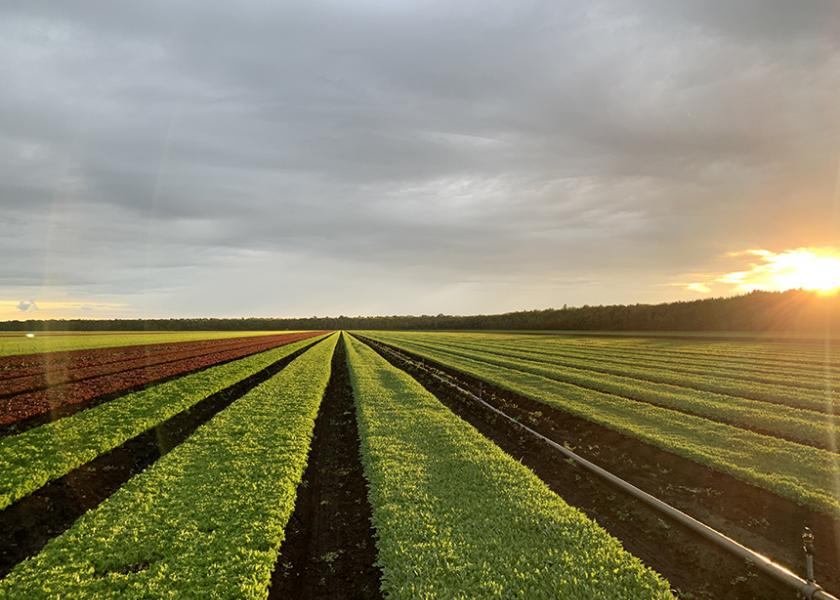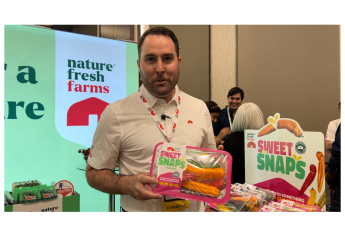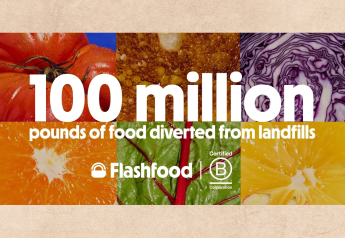Quintessential Quebec: How the province is driving fresh produce forward

From field to greenhouse-grown, Canada’s Quebec province is known for tradition, technology and innovation that drives fresh produce production and inspires consumers to eat more fruit and vegetables. But this agriculture-rich region is not only focused on consumer engagement, it’s also working to attract interest from a younger generation of farmers ready to pick up the torch and blaze a trail toward the future of food.
“Quebec has strong field and fruit production, but also dynamic greenhouse operations for leafy greens, as well as tomatoes,” said Ron Lemaire, president of the Canadian Produce Marketing Association. “Quebec has excelled on production and continues to grow.”
On the field side, Quebec is also blessed with microclimates that create unique growing areas, said Lemaire, pointing to a region just north of Quebec City that excels at strawberry production. Here, the combination of grower and government investment has led to an extended strawberry growing season.
Lemaire sees technology and innovation focused on the end consumer, as in the case of strawberries, becoming increasingly important to the cultivation of fruit and vegetables in the region.
“Technology plays a key role,” Lemaire said. “Growers are investing significantly in hydroponic lettuce, for example, and their strategy is to ensure that they’re able to meet not only domestic market demand, but also export market demand. And then, you look at the tomato industry in Quebec, and you see the same thing. The Quebec produce industry also has the benefit of access to hydroelectric power, which is extremely beneficial to much of the production base throughout the province,” he added.
Labor and the next generation
When asked about the greatest challenges facing Quebec produce, Lemaire says labor continues to be a challenge for the grower community and for everyone throughout the supply chain.
“While Quebec growers and other growers in Canada have done a good job in working with the labor they have, it’s something we need to look at,” he said. “How are we bringing more young people into the industry?”
Through its Passion for Produce Program, designed to support the talent development of young professionals in the produce sector, CPMA works with rising stars to accelerate their professional development through a unique mentoring and learning experience.
“Introducing and keeping that young talent is key. CPMA recognizes young professionals, and we try and keep them in the business by giving them the opportunity to be part of our mentoring program, which positions them to become leaders in the future,” said Lemaire.
And while the produce industry continues to look to technology to ease the labor shortage through automation, at the same time, the high-tech trend may also spark interest among new talent.
“I think technology is helping us to attract the next generation. We’re always telling younger people that farming is a fun and challenging industry. You get to work with computers and you’re able to invent and innovate,” said Sophie Perreault, Quebec Produce Marketing Association president and CEO.
In love with produce
Driving fresh produce consumption is another focus of both CPMA and QPMA. Through its “I Love Fruits and Veggies Movement” program, QPMA has encouraged consumers to incorporate more Quebec produce into their daily habits since the program’s inception in 2004.
“Sophie Perreault has really been a foundational driver for increasing consumption of produce in Quebec, and it started with the creation” of the program, Lemaire said. “That program has been aligned and working with our “Half Your Plate” program. The combination of both is quite strong, driving the message in the province around increasing consumption of Quebec produce.”
In response to rising food costs, the programs are now using a video series and website to show consumers the affordability of fruits and vegetables, and just how much they can buy for $20.
“We always have been in a very competitive market, and we were lucky during COVID to have very strong support from our consumers — they really supported the local market,” Perreault said. “Now, it’s a new reality because we don’t know if that support is still going to be there with inflation. The consumer is going to have to make choices. So, it’s one of my key mandates to continue to talk to the consumer and to tell them that fruit and vegetables should be half of their plates.
“If consumers have to make decisions about what goes in their grocery baskets, we’re encouraging them to please keep the fruit and vegetables,” she continued. “It’s really the best policy insurance you can have for your future and for your health.”
Local innovation
Vegpro International, the largest producer of fresh vegetables in Canada, specializes in growing and packaging baby lettuce. The company, with facilities in Quebec and Florida, has also seen a strong local market emerge from the COVID-19 pandemic.
“One outcome of the events of the last few years has been that Quebec has been very outspoken — our governments have been very outspoken about our food dependency,” said Luc Prevost, vice president of sales and marketing for Vegpro. “We [must be] structured well enough to grow and raise enough of our food without being dependent outside of our province or our country, and that became front and center when people were rushing to the grocery stores and pantry loading and so on.
“Consumers are more and more aware of the importance of supporting local now, and the message of supporting local is louder than it’s ever been,” he continued. “And the governments are fully prepared to help make that happen, whether through financial subsidies or electricity subsidies for greenhouses, for example.”
While Vegpro currently grows its tender leafy greens and vegetables exclusively outside, the company plans to build a $100 million (in Canadian dollars), 4-hectare or 10-acre greenhouse several kilometers away from its current packing plant. Prevost says the greenhouse will employ traditional dirt farming rather than hydroponic growing.
“The growing we’ll do in there is not meant to supplement, nor to replace, what we’re doing in the field,” Prevost said. “It will be devoted to 100% different types of new products.”
Among the new products will be what Vegpro calls “teen leaves,” which are a bit crunchier than baby leaves, a little bit longer and a little more robust, Prevost explained.
“They’ll be in-between a fully mature leaf, like a romaine heart leaf, and a tender leaf. So, somewhere in the middle of that, and there is definitely an appetite for it because consumers are sometimes looking for that crunch, which the tender leaf does not offer.”
Cranberry culture
Not only are cranberries big business in Quebec, the industry is also an area of innovation and change, said Lemaire.
For cranberry producer Atocas Bedard, challenges from weather to labor to soaring transportation costs are real. While this year, it expects an average crop, last year was “the worst year almost ever,” said Patrick Bedard. The result has been a sold-out cranberry market.
“The largest producers of cranberries are Quebec and Wisconsin, so when the two biggest producers are low on yields, it affects the inventory worldwide,” he said.
The cost of transport is another hurdle, but one for which Bedard has found a solution.
While its previous transportation provider would only take full loads, which Bedard says is a challenge with small fruits such as cranberries, Atocas worked with Canada’s largest grocery chains, including Loblaws, Sobeys and Metro, to receive partial loads and direct shipments of cranberries to their distribution centers, where the retailers then redistributed the fruit to their stores.
“They’ve been great. We’ve been very lucky for that, but transport is very, very expensive,” said Bedard. “There are so many challenges these days.”
Berry balancing act
Soaring transport costs are also a challenge for berry producer FIOINC.
“The challenges that we are facing in Canada are pretty much the same as the ones in the U.S.,” said Andre Gosselin, president and co-founder of FIOINC. “Increased cost of production and increased cost of labor, in- creased cost of fertilizer and pesticides. But transport is the main issue, and it’s getting more and more expensive.”
Remaining competitive in this more costly environment is key for FIOINC. One way in which the strawberry, raspberry and black- berry grower aims to achieve this advantage is by tapping into the rapidly changing new genetic selection available in the berry world, said Gosselin.







